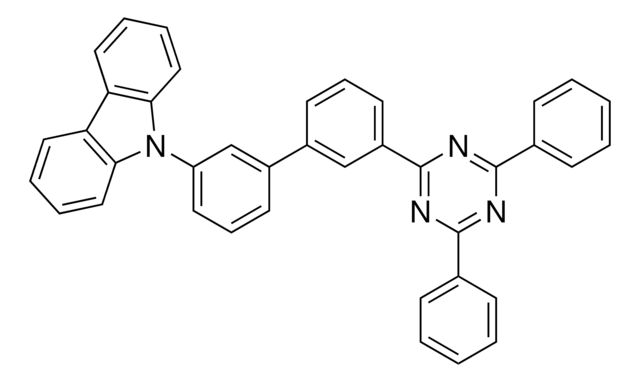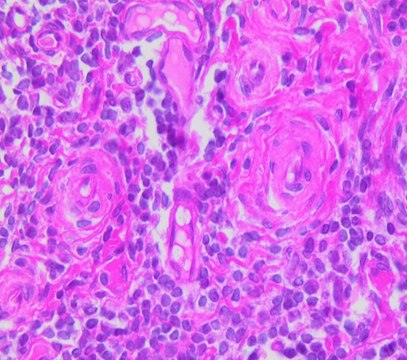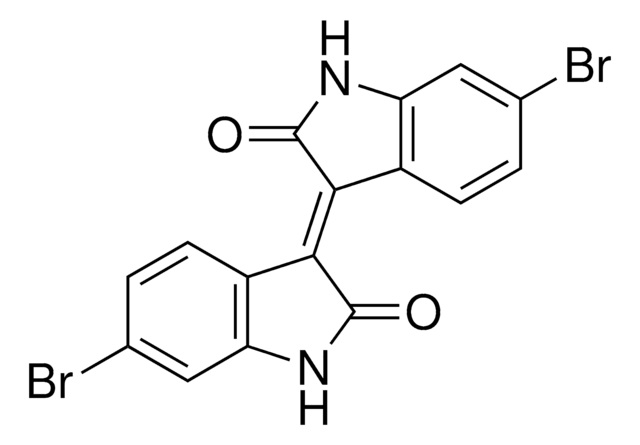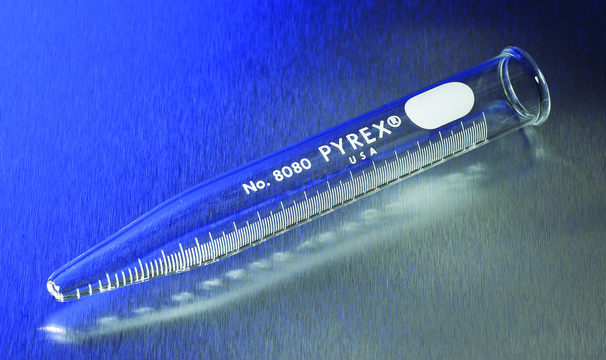776262
3,6-Bis(5-bromo-2-thienyl)-2,5-bis(2-hexyldecyl)-2,5-dihydro-pyrrolo[3,4-c]pyrrole-1,4-dione
98%
别名:
Pyrrolo[3,4-c]pyrrole-1,4-dione,3,6-bis(5-bromo-2-thienyl)-2-5-bis(2-hexyldecyl)-2,5-dihydro-
登录查看公司和协议定价
所有图片(1)
About This Item
经验公式(希尔记法):
C46H70Br2N2O2S2
CAS号:
分子量:
907.00
MDL编号:
UNSPSC代码:
12352103
PubChem化学物质编号:
NACRES:
NA.23
推荐产品
质量水平
方案
98%
表单
solid
mp
110-115 °C
SMILES字符串
O=C1N(CC(CCCCCC)CCCCCCCC)C(C2=CC=C(Br)S2)=C3C1=C(C4=CC=C(Br)S4)N(CC(CCCCCC)CCCCCCCC)C3=O
InChI
1S/C46H70Br2N2O2S2/c1-5-9-13-17-19-23-27-35(25-21-15-11-7-3)33-49-43(37-29-31-39(47)53-37)41-42(45(49)51)44(38-30-32-40(48)54-38)50(46(41)52)34-36(26-22-16-12-8-4)28-24-20-18-14-10-6-2/h29-32,35-36H,5-28,33-34H2,1-4H3
InChI key
MNALLGNMYJQSHP-UHFFFAOYSA-N
一般描述
3,6-Bis(5-bromo-2-thienyl)-2,5-bis(2-hexyldecyl)-2,5-dihydro-pyrrolo[3,4-c]pyrrole-1,4-dione (DDP-Br2) belongs to the series of diketopyrrolopyrrole (DPP) based materials which show hole or ambipolar transport behavior with mobilities of charge carriers in the range of 0.1-1 cm2V-1 s-1. It has an electron deficient core that forms a low LUMO energy level which facilitates better air-stability for n-type organic semiconductors.
应用
DDP-Br2 can be used in the fabrication of a variety of opto-electronic devices such as organic field effect transistors (OFETs), perovskite based solar cells, non-fullerene organic solar cells.
Novel acceptors utilized in low band gap polymer cells and showed optical bandgaps ranging from 1.81 to 1.94 eV and intense absorption bands that cover a wide range from 300 to 700 nm
储存分类代码
11 - Combustible Solids
WGK
WGK 3
闪点(°F)
Not applicable
闪点(°C)
Not applicable
从最新的版本中选择一种:
分析证书(COA)
Lot/Batch Number
Journal of Materials Chemistry, 22, 2120-2128 (2012)
Diketopyrrolopyrrole-containing quinoidal small molecules for high-performance, air-stable, and solution-processable n-channel organic field-effect transistors
Qiao Y, et al.
Journal of the American Chemical Society, 134(9), 4084-4087 (2012)
Hole-transporting diketopyrrolopyrrole-thiophene polymers and their additive-free application for a perovskite-type solar cell with an efficiency of 16.3%
Maruo H, et al.
Polymer Journal, 51(1), 91-91 (2019)
Optimization of broad-response and high-detectivity polymer photodetectors by bandgap engineering of weak donor-strong acceptor polymers
Qi J, et al.
Macromolecules, 48(12), 3941-3948 (2015)
A Novel BODIPY-Based Low-Band-Gap Small-Molecule Acceptor for Efficient Non-fullerene Polymer Solar Cells
Liu W, et al.
Chin. J. Chem., 35(12), 1813-1823 (2017)
我们的科学家团队拥有各种研究领域经验,包括生命科学、材料科学、化学合成、色谱、分析及许多其他领域.
联系技术服务部门![3,6-二(2-噻吩基)-2,5-二氢吡咯并[3,4-c]吡咯-1,4-二酮 97%](/deepweb/assets/sigmaaldrich/product/structures/209/681/63a4048f-a2a7-496b-814d-ccb4b5b76124/640/63a4048f-a2a7-496b-814d-ccb4b5b76124.png)


![二氟(4-(1,1-二甲基乙基)-2-{1-[4-(1,1-二甲基乙基)-3,5-二甲基-2H-吡咯-2-亚烷基-N]乙基} -3,5 -二甲基-1H-吡咯-2-亚甲基-N]乙基} -3,5-二甲基-1H-吡咯并-N)硼 98% (HPLC)](/deepweb/assets/sigmaaldrich/product/structures/207/879/8046aafd-78ca-4fd8-92dc-801de0b6cc53/640/8046aafd-78ca-4fd8-92dc-801de0b6cc53.png)

![1,1′-[4,8-Bis[5-(2-ethylhexyl)-2-thienyl]benzo[1,2-b:4,5-b′]dithiophene-2,6-diyl]bis[1,1,1-trimethylstannane]](/deepweb/assets/sigmaaldrich/product/structures/611/912/a638a6fe-ca7b-4674-8023-df4c0921a9fd/640/a638a6fe-ca7b-4674-8023-df4c0921a9fd.png)
![2,6-Dibromodithieno[3,2-b:2′,3′-d]thiophene ≥97%](/deepweb/assets/sigmaaldrich/product/structures/287/437/cf540b93-ec8c-4d2a-897c-dea0a28a8def/640/cf540b93-ec8c-4d2a-897c-dea0a28a8def.png)
![苯并[1,2B:4,5-B]二噻吩-4- -1,8-二酮 97%](/deepweb/assets/sigmaaldrich/product/structures/418/544/b7faac0b-ad09-4b42-a9fa-aeb38017a39e/640/b7faac0b-ad09-4b42-a9fa-aeb38017a39e.png)

![2,5-双(三甲基锡烷基)-噻吩并[3,2-b]噻吩 97%](/deepweb/assets/sigmaaldrich/product/structures/126/532/26557e94-858e-4c96-90de-ca88d84a8727/640/26557e94-858e-4c96-90de-ca88d84a8727.png)